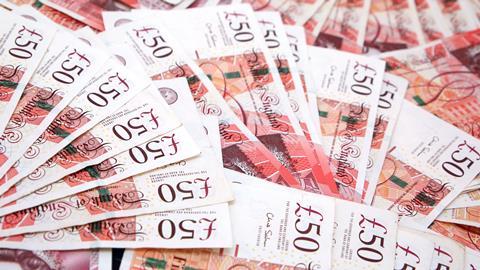Kick-start a lesson with £50 – ask students which chemist they’d nominate for the new bank note
The Bank of England recently announced that it was inviting nominations for a scientist to put on the new £50 note. The Bank’s criteria are that it must be someone who’s contributed to science; they must be real; they must be dead. We’ve added our own criteria: they have to be a chemist. Here in no paritcular order are our picks, and why. Who would you choose?
Robert Boyle
‘If you’re going to commemorate a chemist, why not the first one?’ suggests EiC managing editor, Paul MacLellan.
Henry Cavendish
For his discovery of hydrogen, or inflammable air as he called it. Or for his research into the composition of atmospheric air.
John Dalton
Because of his contribution to the periodic table, particularly as 2019 is the International Year of the Periodic Table.
Humphry Davy
Just like Dalton, he’s a candidate for his work on the period table, particularly as 2019 is the International year of the Periodic Table.
Rosalind Franklin
For her contribution to the discovery of the structure of DNA and RNA, or for her X-ray diffraction images of DNA, leading to the discovery of DNA double helix for which Watson, Crick and Wilkins shared the Nobel prize in 1962.
Elizabeth Fulhame
‘Because she discovered catalysis,’ says EiC editorial assistant, Luke Blackburn.
Dorothy Hodgkin
Still the only British woman to have won the Nobel prize for chemistry, she was the first to publish the structure of vitamin B12. alternatively, you could cite her discovery of atomic structure of penicillin in 1945, or for her demonstration that a protein had a regular molecular structure.
William Henry Perkin
‘Because he discovered the world’s first synthetic dye, mauveine,’ says EiC digital editor, David Sait.
Marjory Stephenson
’Because she was one of the first two female fellows of the Royal Society?’ suggests EiC deputy editor, Lisa Clatworthy.
Martha Annie Whiteley
For her campaign for female admission to the Chemical Society, or for her First World War work on mustard gas.
Download these slides containing biographical information about these chemists [MS PowerPoint or pdf].
Downloads
Which chemist would you put on the £50 note?
PowerPoint, Size 1.35 mbWhich chemist would you put on the £50 note?
PDF, Size 1.04 mb







No comments yet